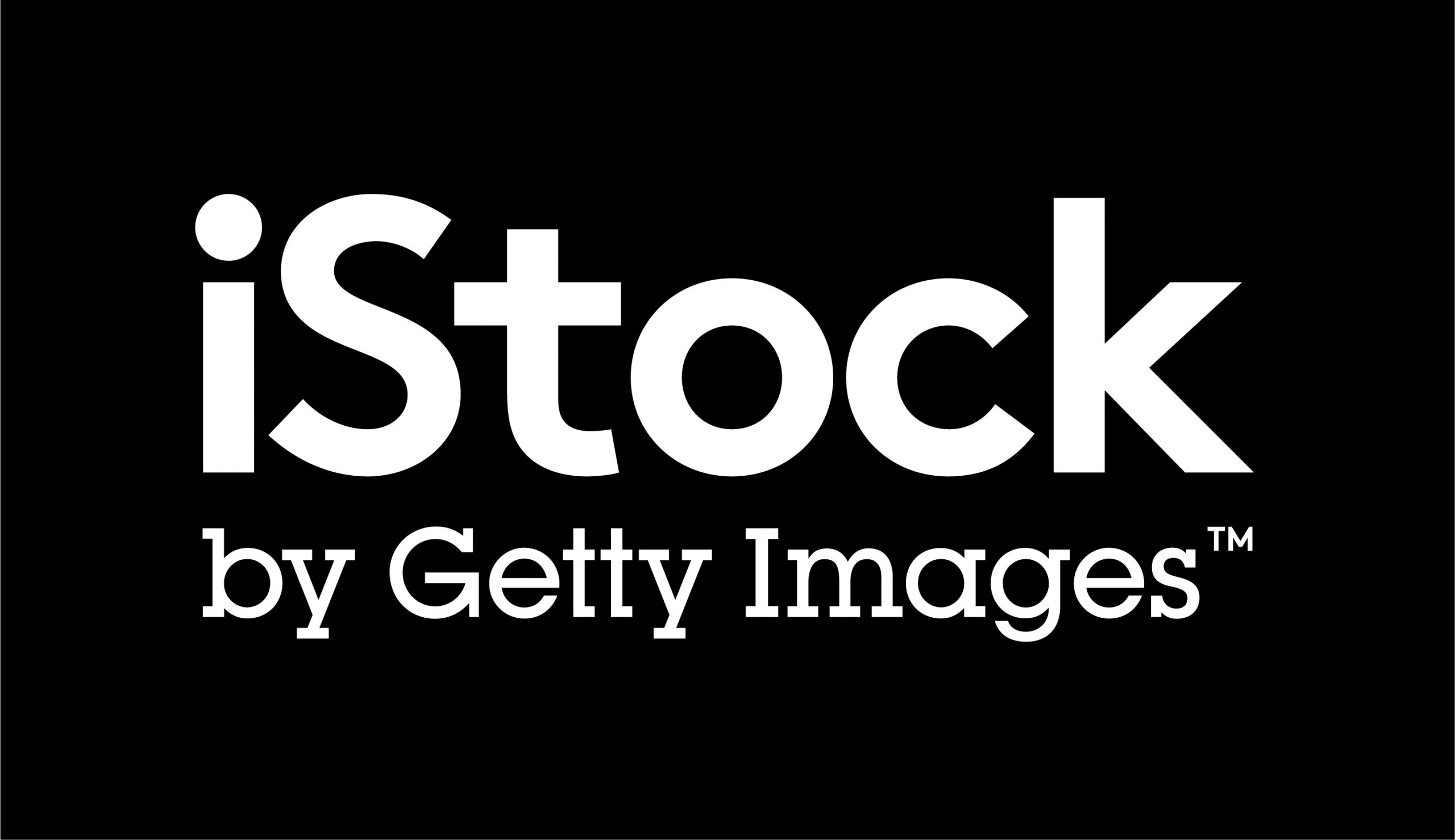Introduction
Stock photography platforms have revolutionized the way photographers monetize their craft, and iStock is among the most prominent players in the industry. If you're an aspiring photographer or a seasoned professional, you may be wondering, "Can you make money on iStock?" This blog post aims to delve into the earning potential for contributors on iStock, providing insights into the process, requirements, and strategies for success.
By understanding how iStock works and exploring the factors that influence earning potential, photographers can unlock opportunities to generate income through their passion for photography. Get ready to discover the possibilities and rewards of contributing to iStock as we dive into the world of stock photography earnings.
Also Read This: How to Cancel Freepik Subscription: A Step-by-Step Guide
What is iStock?
A. Brief introduction to iStock as a popular stock photography platform
iStock is a renowned and widely recognized stock photography platform that connects photographers and artists with potential buyers looking for high-quality visual content. It was established in 2000 and has since become one of the leading platforms in the industry. iStock offers a vast and diverse collection of royalty-free images, illustrations, videos, and audio files contributed by a global community of creatives.
B. How iStock works for contributors
iStock provides a platform for photographers and artists to monetize their work by becoming contributors. Here's how it works:
- Sign up as a contributor: Interested individuals can create an iStock contributor account, which involves providing necessary information, agreeing to terms and conditions, and submitting samples of their work for review.
- Image submission and review process: Contributors can upload their photos, illustrations, or other visual assets to the platform. These submissions are then reviewed by iStock's team to ensure they meet the platform's quality and content guidelines.
- Approval and licensing: Once an image is approved, it becomes available for licensing to potential buyers. iStock offers various licensing options, allowing buyers to purchase the rights to use the images in their projects based on their specific needs.
- Earnings and royalties: Contributors earn royalties based on the licensing and usage of their images. iStock operates on a royalty-based system, where contributors receive a percentage of the revenue generated from each sale.
C. Benefits of contributing to iStock
Contributing to iStock offers several benefits for photographers and artists:
- Global reach and exposure: iStock has a vast customer base and a global reach, which means that contributors have the opportunity to showcase their work to a wide audience of potential buyers.
- Additional income stream: By monetizing their images on iStock, contributors can generate a steady stream of income from their photography or artwork. This can be particularly beneficial for photographers looking to supplement their existing photography business or generate passive income.
- Access to a supportive community: iStock has a thriving community of contributors who share knowledge, insights, and experiences. It provides a supportive environment where contributors can connect, learn, and grow as professionals in the stock photography industry.
- Flexibility and convenience: iStock allows contributors to work at their own pace and submit images according to their availability. This flexibility enables contributors to balance their creative pursuits with other commitments.
Contributing to iStock presents an opportunity for photographers and artists to showcase their work, earn income, and connect with a vibrant community of creatives. It provides a platform that brings together buyers and contributors, facilitating the exchange of visually captivating content in the digital marketplace.
[caption id="attachment_185549" align="alignnone" width="2560"] What is iStock[/caption]
What is iStock[/caption]
Also Read This: 10 Best Practices for Writing Effective Facebook Posts
Becoming an iStock Contributor
A. Requirements and eligibility to become a contributor
Before becoming an iStock contributor, it's essential to understand the requirements and eligibility criteria. Here are some key considerations:
- Age and Legal Requirements: Contributors must be at least 18 years old or of legal age in their jurisdiction to enter into a legal agreement with iStock.
- Quality and Technical Standards: iStock maintains strict quality standards for image submissions. Your photos or artwork should meet these standards in terms of resolution, focus, lighting, composition, and technical excellence.
- Model and Property Releases: If your images include recognizable individuals or private property, you may need to provide model or property releases, granting permission for the images to be used for commercial purposes.
B. Creating an iStock contributor account
To become an iStock contributor, follow these steps:
- Visit the iStock website: Go to the iStock website and navigate to the contributor section.
- Sign up as a contributor: Click on the "Join" or "Sign Up" button and follow the instructions to create a contributor account. You will need to provide personal information, agree to the terms and conditions, and set up your payment preferences.
- Submit sample work for review: After creating your account, you will need to submit sample images or artwork for review. This review process ensures that your work meets iStock's quality and content guidelines.
- Approval and activation: Once your samples are reviewed and approved, your account will be activated, and you can start submitting your images for licensing.
C. Guidelines for submitting images and assets
When submitting images and assets to iStock, it's crucial to adhere to their guidelines. Here are some key considerations:
- Content Guidelines: Ensure that your submissions comply with iStock's content guidelines, which prohibit certain types of content, including offensive or illegal material.
- Metadata and Descriptions: Provide accurate and relevant metadata, including titles, keywords, and descriptions, to enhance the discoverability of your images.
- Releases and Permissions: If your images feature recognizable individuals, private property, or copyrighted elements, make sure you have the necessary model or property releases and permissions to use and sell those images.
- File Formats and Technical Requirements: Follow iStock's guidelines for file formats, resolution, color profiles, and other technical specifications to ensure that your submissions meet the platform's standards.
By understanding the requirements, creating a contributor account, and adhering to the submission guidelines, you can start your journey as an iStock contributor. It's essential to maintain the quality and relevance of your submissions to increase the chances of approval and maximize your earning potential on the platform.
[caption id="attachment_185579" align="alignnone" width="1500"] Becoming an iStock Contributor[/caption]
Becoming an iStock Contributor[/caption]
Also Read This: Deleting Your Foap Account: A Step-by-Step Guide
Earning Potential on iStock
A. Royalty rates and payment structure on iStock
Understanding the earning potential on iStock requires knowledge of its royalty rates and payment structure. Here are key points to consider:
- Royalty Rates: iStock operates on a tiered royalty system based on the contributor's lifetime downloads. As the number of downloads increases, contributors move up the tiers, leading to higher royalty rates per download.
- Exclusive vs. Non-Exclusive Contributors: iStock offers higher royalty rates for exclusive contributors who submit their work solely to iStock. Non-exclusive contributors have the flexibility to submit their images to multiple stock photography platforms but receive lower royalty rates.
- Exclusive Signature Artist Program: iStock offers an Exclusive Signature Artist program to select contributors with exceptional portfolios. Artists in this program receive higher royalty rates and additional benefits.
B. Factors influencing earning potential
Several factors influence the earning potential on iStock. Understanding these factors can help contributors maximize their earnings:
- Quality and Uniqueness: High-quality, unique, and visually appealing images have a better chance of attracting buyers and generating more sales.
- Market Demand and Trends: The popularity and demand for certain types of images and themes can affect earnings. Staying updated on market trends and fulfilling the needs of buyers can increase the chances of generating higher sales.
- Portfolio Size and Activity: The size and activity level of a contributor's portfolio can impact earnings. Building a diverse and extensive portfolio and consistently adding new, high-quality images can lead to increased visibility and sales.
C. Case studies and success stories of top contributors
Exploring case studies and success stories of top contributors can provide valuable insights into the earning potential on iStock. These stories often highlight the strategies, techniques, and best practices that contribute to their success.
It's important to note that the earning potential on iStock can vary for each contributor. While some contributors may earn substantial income, others may have more modest earnings based on their portfolio, marketing efforts, and market conditions. Regularly analyzing and adapting to market trends, refining skills, and maintaining a consistent presence on the platform can increase the chances of maximizing earning potential on iStock.
[caption id="attachment_185580" align="alignnone" width="1500"] Earning Potential on iStock[/caption]
Earning Potential on iStock[/caption]
Also Read This: Footage Fiesta: Navigating the Process of Downloading Test Footage on iStock
Maximizing Earnings on iStock
To maximize your earnings on iStock as a contributor, consider the following strategies:
A. Optimize Image Quality and Relevance
- High-Quality Images: Focus on producing images that meet iStock's quality standards. Pay attention to composition, lighting, sharpness, and technical excellence to ensure your images stand out.
- Relevance to Market Demand: Research and understand the market trends and preferences of iStock buyers. Create images that align with popular themes, subjects, and concepts to increase the likelihood of attracting buyers.
B. Enhance Discoverability through Keywording and Metadata
- Accurate Keywording: Use relevant and specific keywords that describe your images accurately. Think about how buyers would search for your images and incorporate those keywords in the metadata.
- Comprehensive Descriptions: Provide detailed and informative descriptions that give buyers a clear understanding of the content and potential use cases for your images.
C. Leverage iStock's Tools and Resources
- Contributor Forums and Community: Engage with the iStock community through forums, discussions, and networking opportunities. Learn from experienced contributors, share insights, and gather valuable tips for improving your sales.
- iStock Partner Program: Consider joining iStock's Partner Program, which enables you to earn additional royalties by referring buyers or other contributors to iStock.
D. Regularly Upload New Content
- Consistent Activity: Stay active on iStock by regularly uploading new content. This helps maintain visibility, engages potential buyers, and expands your portfolio.
- Variety and Diversity: Aim to diversify your portfolio by exploring different subjects, concepts, and styles. Cater to various buyer preferences and increase your chances of appealing to a wider audience.
E. Promote Your iStock Portfolio
- Social Media Promotion: Utilize social media platforms to showcase your work and redirect potential buyers to your iStock portfolio. Engage with relevant communities, use appropriate hashtags, and leverage social media marketing techniques.
- Cross-Promotion and Website Integration: Promote your iStock portfolio on your personal website, blog, or other online platforms. Link to your iStock profile and showcase your best-selling images to attract potential buyers.
By implementing these strategies and continuously refining your approach, you can increase your earnings on iStock. Remember, success on iStock requires a combination of quality content, market awareness, effective promotion, and consistent effort to stay ahead of the competition.
[caption id="attachment_185581" align="alignnone" width="1500"] Maximizing Earnings on iStock[/caption]
Maximizing Earnings on iStock[/caption]
Also Read This: List of Top Twitter Accounts to Follow in 2023
Rights and Licensing on iStock
Understanding the rights and licensing aspects on iStock is essential for contributors. Here are key considerations:
A. Understanding Licensing Models on iStock
- Royalty-Free (RF) License: iStock primarily operates under a royalty-free license model. This allows buyers to pay a one-time fee to license an image for multiple uses without any additional royalties or fees.
- Extended Licenses: iStock offers extended licenses for specific uses that go beyond the standard royalty-free license. These extended licenses grant buyers additional rights, such as unlimited print runs or use in merchandise for resale.
B. Usage Rights and Restrictions for Contributors
- Rights Granted: When contributors upload their images to iStock, they grant iStock and its buyers the right to use, modify, and license the images for specific purposes outlined in the licensing agreement.
- Restrictions: iStock imposes certain restrictions on the usage of images. Contributors should be aware of these restrictions to ensure compliance. Common restrictions may include using images in sensitive subjects, defamatory contexts, or for certain commercial purposes without obtaining additional releases or permissions.
C. Protecting Copyright and Avoiding Infringement
- Copyright Ownership: As a contributor, you retain the copyright ownership of your images. iStock and its buyers are granted a license to use the images, but the copyright remains with the creator.
- Copyright Infringement: iStock takes copyright infringement seriously. They have mechanisms in place to address copyright violations, such as reporting and takedown procedures. It's important for contributors to monitor and protect their copyrighted images from unauthorized use.
- Intellectual Property Rights: As a contributor, it's crucial to ensure that your images do not infringe on others' intellectual property rights, including trademarks, logos, and copyrighted materials. Conduct thorough research and obtain necessary releases when featuring recognizable brands, logos, or trademarked elements.
Understanding the rights and licensing aspects on iStock helps contributors navigate the platform's terms and protect their intellectual property. By staying informed about licensing models, usage rights, and restrictions, contributors can confidently showcase their work while ensuring compliance with copyright laws and avoiding infringement issues.
[caption id="attachment_185582" align="alignnone" width="1500"] Rights and Licensing on iStock[/caption]
Rights and Licensing on iStock[/caption]
Also Read This: Getting Started with EyeEm: A Beginner’s Tutorial
Promoting and Marketing your iStock Portfolio
Effectively promoting and marketing your iStock portfolio can increase your visibility, attract potential buyers, and ultimately boost your earnings. Consider the following strategies:
A. Building a Strong Portfolio and Branding as a Contributor
- Curate a Professional Portfolio: Carefully curate your iStock portfolio by selecting your best and most marketable images. Ensure that your portfolio represents your unique style and showcases a diverse range of subjects and concepts.
- Develop a Brand Identity: Establish a consistent brand identity as a contributor. Use a cohesive style, color palette, or theme across your images to create a recognizable and memorable brand for potential buyers.
B. Utilizing Social Media and Online Channels
- Social Media Promotion: Utilize social media platforms like Instagram, Twitter, Facebook, and Pinterest to showcase your iStock portfolio. Regularly post your images, engage with your followers, and use relevant hashtags to reach a wider audience.
- Create a Blog or Website: Consider creating a blog or website where you can showcase your iStock portfolio and provide valuable content related to photography or your specific niche. This helps build credibility, attract organic traffic, and establish yourself as an authority in your field.
- Collaborate with Influencers or Bloggers: Collaborate with influencers or bloggers in your niche to feature your iStock portfolio in their content. This exposes your work to their audience, potentially attracting new buyers and generating more visibility.
C. Engaging with the iStock Community and Participating in Forums
- Contributor Forums: Engage with the iStock community by participating in contributor forums or online groups. Share insights, seek advice, and connect with fellow contributors to learn from their experiences and gain valuable industry knowledge.
- Offer Assistance and Tips: Be active in the community by offering help and sharing tips with other contributors. This not only establishes you as a helpful member but also increases your visibility within the community.
- Attend iStock Events and Webinars: Stay updated on iStock's events and webinars. These platforms provide opportunities to network with industry professionals, learn new techniques, and gain insights into the stock photography market.
By effectively promoting and marketing your iStock portfolio through various online channels, social media platforms, and community engagement, you can increase your exposure, attract potential buyers, and maximize your earnings as a contributor. Consistency, quality content, and active participation in the photography community are key elements for success.
[caption id="attachment_185583" align="alignnone" width="1500"] Promoting and Marketing your iStock Portfolio[/caption]
Promoting and Marketing your iStock Portfolio[/caption]
Alternative Options for Monetizing Photography
While iStock is a popular platform for monetizing photography, there are alternative options that photographers can explore to generate income from their work. Consider the following avenues:
A. Joining Other Stock Photography Platforms
- Shutterstock: Shutterstock is one of the largest stock photography platforms, offering a vast customer base and global reach. Joining Shutterstock as a contributor can expand your potential market and increase your earning opportunities.
- Adobe Stock: Adobe Stock integrates seamlessly with Adobe Creative Cloud, making it a convenient choice for photographers who already use Adobe software. It provides a large customer base and offers competitive royalty rates.
B. Freelancing and Direct Client Work
- Freelance Photography: Freelancing allows photographers to work directly with clients on specific projects, such as portraits, events, product shoots, or commercial assignments. Building a strong portfolio, networking, and marketing your services can help attract clients and generate income.
- Direct Stock Photo Sales: Instead of using a stock photography platform, photographers can choose to sell their images directly to clients or businesses. This approach gives you more control over pricing and licensing terms.
C. Building a Personal Brand and Selling Prints or Licenses Independently
- Print Sales: Create high-quality prints of your photographs and sell them through your own website or online platforms like Etsy. Offer limited editions, signed prints, or exclusive series to attract collectors and photography enthusiasts.
- Licensing for Commercial Use: Reach out to businesses directly and offer licensing agreements for the use of your images in their marketing materials, websites, or advertising campaigns. Negotiate licensing fees and terms based on the specific requirements of each client.
D. Photography Workshops, Tours, and Education
- Teaching Photography: Share your knowledge and expertise by conducting photography workshops, courses, or mentoring programs. This allows you to monetize your skills while helping others improve their photography.
- Photography Tours: Organize guided photography tours to picturesque locations, offering participants the opportunity to capture stunning images while benefiting from your guidance and expertise.
Exploring these alternative options allows photographers to diversify their income streams and tap into different markets. It's important to evaluate each option based on your skills, interests, target audience, and available resources. Combining multiple approaches can provide a well-rounded and sustainable monetization strategy for your photography.
[caption id="attachment_185584" align="alignnone" width="1500"] Alternative Options for Monetizing Photography[/caption]
Alternative Options for Monetizing Photography[/caption]
Frequently Asked Questions (FAQs)
How much money can I make on iStock as a contributor?
The earning potential on iStock varies for each contributor and depends on factors such as image quality, market demand, portfolio size, and activity level. While some contributors earn substantial income, others may have more modest earnings. Consistently uploading high-quality images, staying informed about market trends, and actively promoting your portfolio can increase your chances of earning more.
Are there any upfront costs or fees to become an iStock contributor?
There are no upfront costs or fees to become an iStock contributor. It is free to create a contributor account and start submitting your images. iStock earns a commission from the sales of your images, and you receive a royalty based on the licensing and usage of your content.
Can I contribute to iStock if I am not a professional photographer?
Yes, iStock welcomes contributions from photographers of all skill levels. While professional-level photography can have advantages, such as higher image quality and experience in understanding market demand, hobbyist photographers can also contribute their unique perspectives and creative content.
Can I contribute to iStock if I live outside of the United States?
Absolutely. iStock accepts contributors from around the world. As long as you meet the eligibility requirements, such as being of legal age in your jurisdiction, you can join iStock and contribute your images.
Can I contribute images taken with a smartphone or does it have to be from a professional camera?
iStock accepts images taken with both professional cameras and smartphones. The key factor is the quality of the image, including factors such as resolution, composition, and technical excellence. As long as your smartphone images meet iStock's quality standards, they can be submitted and licensed on the platform.
Can I sell the same images on multiple stock photography platforms?
It depends on the exclusivity terms you choose. iStock offers higher royalty rates for exclusive contributors who submit their work solely to iStock. If you choose to be non-exclusive, you have the flexibility to sell your images on multiple stock photography platforms.
How often can I expect to receive payments for my image sales on iStock?
iStock offers monthly payments to contributors. Once you reach the minimum payout threshold and have requested a payment, you will receive your earnings via the payment method you have set up in your contributor account.
Conclusion
Monetizing photography has become more accessible than ever, thanks to platforms like iStock and various alternative options available to photographers. In this blog post, we explored the earning potential for contributors on iStock and discussed the limitations, guidelines, and strategies for success. iStock offers a global reach, a supportive community, and the opportunity to earn income by licensing your images.
However, photographers can also consider joining other stock photography platforms, freelancing, selling prints or licenses independently, and offering photography-related services to diversify their income streams. By understanding the different avenues available, photographers can maximize their earning potential, showcase their creativity, and turn their passion into a profitable endeavor. Remember to stay informed, continually improve your skills, and adapt to changing market trends to thrive in the competitive world of photography monetization.









































